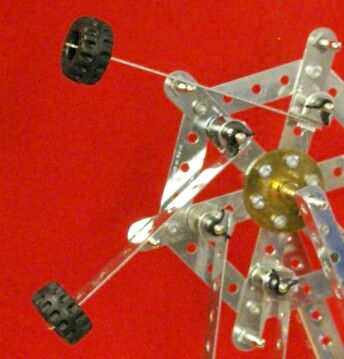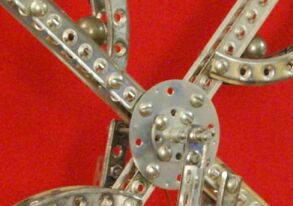The Basement Mechanic's Guide to Building Perpetual Motion Machines
|
Why bother to build useless devices?
Why build them? That's a good question, considering that they never work as you may have hoped. I submit that you can still learn a lot from hands-on experience with devices of faulty design. You learn some of the reasons why the design was misguided. Also you learn one of the dirty little secrets hidden during the many centuries of futile efforts toward over-unity machines: They perform miserably! Since the 11th century (actually earlier) folios and books of mechanisms have included one or more of these misguided designs (often with mild and cryptic disclaimers attached). Yet no one forthrightly declared how poorly they perform, based on hands-on experience with an actual machine.Leonardo Da Vinci probably built and tested a few overbalanced wheels, but only tersly dismissed them without giving details of how far they fell short, even in comparison with the notoriously inefficient (though still useful) machines of his day. We strongly suspect that those who thought perpetual motion was possible had never bothered to actually build even one such machine.
The finished model makes a nice conversation piece to display on your desk at home or work. If anyone asks, you can say it is symbolic of the uselessness and futility of many of the activities of the workplace.
Materials.
Most of the classic perpetual motion designs may be easily built from parts already on hand, or readily available at your hardware or home-improvement store. If you are handy with wood, use that. If you like metalworking and have the equipment, that's great. If you are niether, consider steel construction set parts such as Meccano, Erector, Mech-Tech, Mech-Struct, Steel-Tech, Exacto, Temsi, Merkur, Eitech, etc. Some of these are no longer available as new sets, but a web search will reveal sources of supply for parts and even used sets. A trip to a yard sale or local antiques store will often yield old sets at reasonable prices. In this document I will show examples of how these can be used.Taccola's wheel.
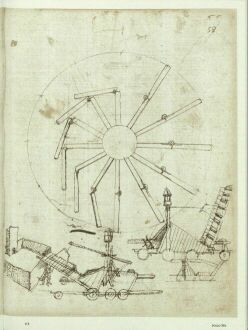 |
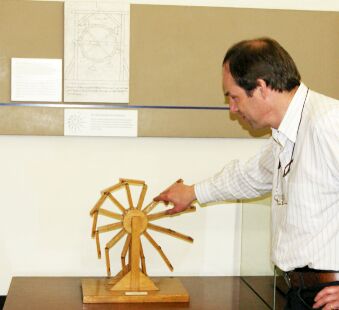
|
| Taccola's wheel | Wooden model. Deutsches Museum. |
|---|
The idea of a mechanically "overbalanced" wheel actually originated in the Orient, and is probably the inspiration for Villard's wheel (see below). It is one of the simplest to build. This model, from the Deutsches Museum, is made of wood with brass hinges. Hans-Peter Gramatke is assisting, preventing the wheel from moving so that it could be photographed in the museum's low light without blurring.
The wheel of Villard de Honnecort.
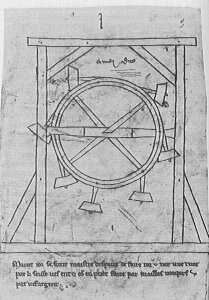 |
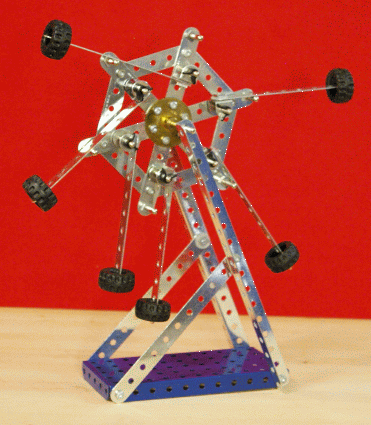 |
| Villard's wheel. | Meccano model by DES. |
|---|
|
Villard's diagram shows strange perspective (common in his time) and does not show any constraints on the hammers. In later centuries diagrams of this device were more explicit in showing methods for positioning the hammers at extended position on one side of the wheel. Our model uses smooth pins as hinges, and also as position constraints.
Performance. All of these wheels have positions of static equilibrium, and these photos show them in one of those rest positions. The inventor assumes that if the wheel is given a clockwise push, it will continue to rotate. But to get the wheel moving, you must manually turn it till a hammer is at the top and pointed straight up, then that hammer falls. At the same time, the hammer must rotate, which gives the wheel a counterclockwise force (backward) on the main wheel. So as the hammer falls, the wheel gets an impulse in the wrong direction. Then, when the hammer hits a pin, this gives the wheel an impulse in the "correct direction". The hammer gains some energy from falling in the gravitational field, but no more than the energy you had to input to get the wheel started. There's no net energy gain, actually an energy loss, due to inelastic compression of materials. The wheel comes to rest and assumes another equilibrium position before making even one complete revolution.
For comparison, you can then observe the wheel's performance with the hammers locked in one position, either extended, or not. Now the wheel performs much better, and a small push will cause it to turn many revolutions before it stops due to friction. The bottom line is that when you disable the hammers (which the inventor supposed were giving it excess energy) the system performs much better. This illustrates a simple and effective way to test a mechanical perpetual motion design.
Note. Frank Hornby, who invented and patented the Meccano construction set system in 1901, is said to have wanted to build a perpetual motion machine when he was a child. As children do, he grew out of that notion. We don't know whether he ever used Meccano to build a classic perpetual motion device, but he could have done so easily, as we have shown.
The rolling ball wheel.
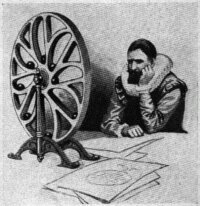 |
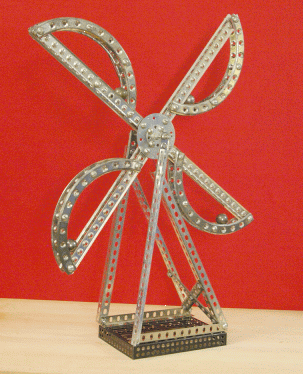 |
| Rolling ball wheel. | Erector model by DES. |
|---|
|
This is another design that appeared in many variants over several centuries. All versions have in common the feature of balls moving in chambers with one straight and one curved contour.
For this model I chose a Gilbert Erector set from the 1960s, when the company had abandoned its "square girder" parts for a simpler design. While the sets from this era are shunned by collectors (and therefore used sets and parts are available at lower cost), they are remarkably versatile for model building. In this case, its curved strips were ideal for the curved contour of the cage in which each steel ball moves. The balls roll on tracks on the smooth edges of these steel rails, which are held 1/2 inch apart by 1/2 inch binder post spacers available at stationary stores. These happen to be 6-32 threaded, and are just the right size for the holes in Erector parts. The black base is from one of the "5 in 1" sets put out by Gilbert for a few years, with parts that were mostly cut to a different standard than all previous Gilbert sets. (For these they abandoned the 1 inch hole spacing that had been standard.) These sets were mostly intended to build models of construction machines and military vehichles.
Performance: It's the same story as we found for Villard's wheel (above).
This wheel differs from the verision Leonardo studied. Leonardo's drawing shows balls rolling across the axis from one side to the other, traversing the loop, then crossing the axis again. If you build one of those (a worthy challenge to the builder) you will find that the elegant complication doesn't help at all.
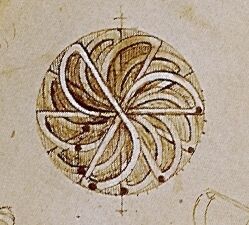 |
One of the wheels Leonardo da Vinci studied, rotated to be correct with respect to gravity. Notice that the ball channels cross over at the center axle. |
|---|
The ball-chain.
The ball-chain on double ramp was hailed as a "wonderful" invention for achiveing perpetual motion. The assumption was that since there was always greater weight of chain on the left ramp, the chain would rotate counterclockwise continually.
 |
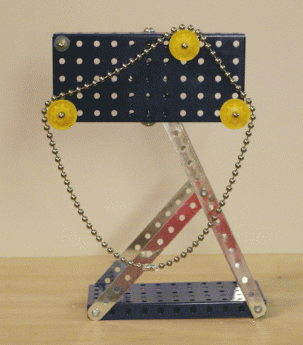 |
| Ball-chain on ramp shown to be faulty by Simon Stevin. |
Meccano model by DES. |
|---|
Simon Stevin (1548-1620) showed conclusively that it wouldn't work, and for his trouble, this is now known as "Stevin's machine". Our Meccano model uses a standard ball-chain, available in hardware stores. It reduces friction by omitting the ramps and substituting low-friction pulleys. Of course it still just sits there, unwilling to move on its own. As Stevin said "The wonderful is not so wonderful." (Wonder en is gheen wonder.)
 |
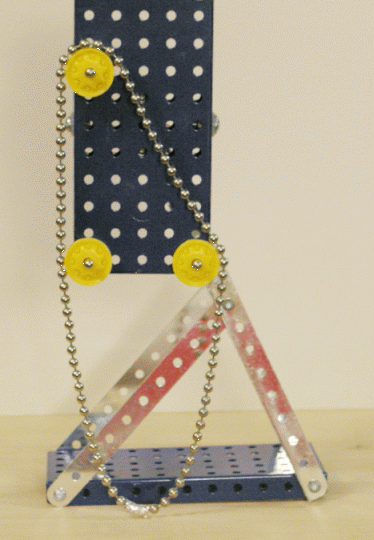 |
| Ball-chain overbalance. | Meccano model by DES. |
|---|
A slight rearrangement of things shows a simpler device that ought to work better—if the assumed principle were correct, which it isn't. This is very much like a device invented several centuries later, which has extra and unnecessary pulleys that only add to the friction. This inventor obviously didn't understood Stevin's method for analysis of such machines.
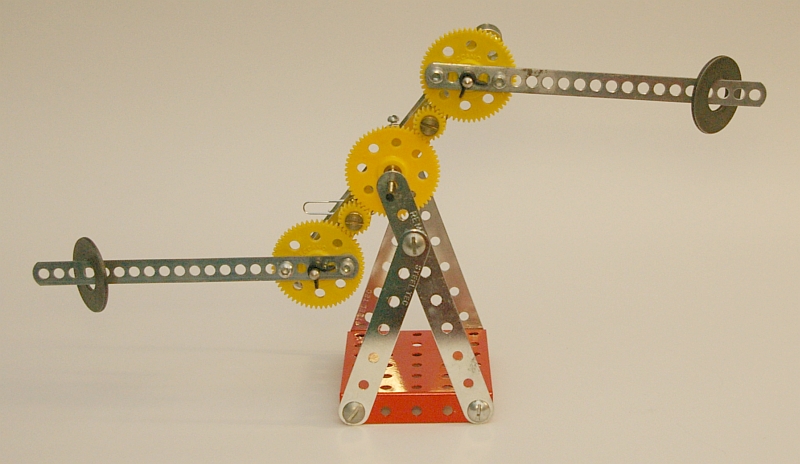 |
| The geared roberval balance. Erector/Meccano model by DES. |
|---|
The Roberbal balance lies at the heart of many perpetual motion machines, and is the mechanism of the double-pan laboratory balance. But the principle can also be applied to gears, and clearly demonstrates that balance of compound linkages are not, as some naively think, just applications of the Archimedes' law of the lever. This model shows equal weight steel washers in balance. But they would balance nicely even if the washers were different distances from the central axle.
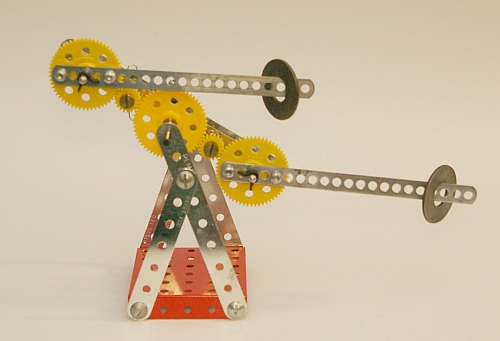 |
| Obviously overbalanced. Erector/Meccano model by DES. |
|---|
They will also balance even when the gears are altered so that both washers are on the same side of the axle.
These examples are so eaily constructed, and so instructive, that we wonder why perpetual motion believers don't take a little time to build some simple mechanisms of this sort and learn something from them about how nature works—and how it doesn't.
If you need ideas for other mechanical machines to build, there's a good collection of 23 of them in the chapter on Perpetual Motion in Mechanical Appliances and Novelties of Construction.
© 2006 by Donald E. Simanek. Minor edits, 2010, 2015.
Return to The Main Gallery of the Museum of Unworkable Devices.
Return to the top of this page.
Return to Donald Simanek's Front Page.

